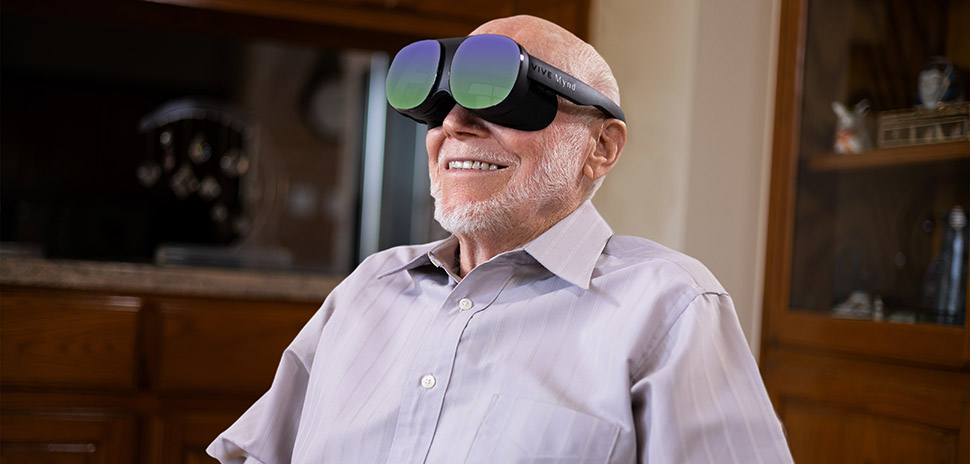![]() In urban areas, trips by cars and trucks are often unpleasant (and all-too-familiar) adventures in avoiding accidents, potholes, construction zones, and other drivers.
In urban areas, trips by cars and trucks are often unpleasant (and all-too-familiar) adventures in avoiding accidents, potholes, construction zones, and other drivers.
Researchers at Southern Methodist University are developing technologies that allow vehicles, traffic signals, and even construction signs to share information, to reduce unwanted surprises and drama on roadways.
While what Khaled Abdelghany and his team of researchers is up to sounds incredibly complex (because it is), the net result might lead drivers to do something as simple as stopping for a cup of coffee instead of sitting in traffic caused by an accident.
“With the information we’ve been collecting, perhaps someday, you will receive a message in your car that says ‘There’s congestion ahead; why don’t you stop and get a Starbucks?’ ” said Abdelghany, an associate professor in SMU’s Lyle Civil and Environmental Engineering Department.
Abdelghany is working on the project with four students in his department, and is collaborating with Dinesh Rajan and Joseph Camp, who are professors in SMU’s Lyle Electrical Engineering Department.
RESOLVING URBAN PROBLEMS WITH SMART TECH
Their research is part of a larger initiative to resolve long-standing urban problems.
SMU, the University of Texas at Dallas, and the University of Texas at Arlington are taking part in a nationwide effort — called MetroLab Network — to solve lingering urban problems by pairing university researchers with cities and counties seeking solutions.
Launched by the White House in 2015, the MetroLab Network includes 34 cities, three counties, and 44 universities, organized into 30 regional city-university partnerships.
The Texas Research Alliance is coordinating research efforts locally. The resulting technology developed in North Texas is intended to be deployed at some point in Downtown Dallas’ West End, and, perhaps, scaled regionally or nationwide.
Abdelghany and his students chose to tackle the problem of traffic congestion for their MetroLab project in part because they had already been working on various iterations of the issue.
Over the past several years, Abdelghany has collected Dallas-area traffic data, for purposes of predicting future traffic jams, and to help develop strategies for routing traffic around tie-ups when they happen.
“With continued work, I expect that North Texas can be a hub for one of the next big pushes in technology.”
GEOFFREY ORSAK
When technology surfaced that allows vehicles to receive and to share information with each other wirelessly, it seemed logical to include that additional information into the data mix, Abdelghany said.
The confluence of this data could result in some dramatic changes in getting from “Point A” to “Point B,” including:
- The elimination of some traffic lights in favor of on-board computers that would decide which vehicle would have the right of way, based on which vehicle arrived first;
- Drivers would learn of road hazards via wireless transmissions from vehicles ahead;
- Traffic signals’ cycles would be altered based on traffic flow;
- Drivers would be given advanced notifications of impending signal changes or traffic tie-ups, so they’re better prepared to react, and;
- Information from businesses also possibly could be incorporated into drivers’ data streams, such as services or goods to give travelers alternative courses of action, besides sitting in traffic (such as grabbing a cup of Starbucks, a meal, etc.).
PUTTING THEORIES TO REAL-WORLD TESTS
Many of these concepts are still on the drawing board, and are dependent upon nearly universal installation of wireless transmitters/receivers into vehicles and traffic controllers. The work at SMU is putting many of these theories to real-world tests in cordoned-off parking lots on campus.
One YouTube video posted by Abdelghany shows a student inside a car, holding a tablet, which emits warning tones and lights when another vehicle, also equipped with a transmitter/receiver, comes within close proximity. A second video depicts a different application of the technology, where SMU’s wireless-equipped vehicles are displayed as icons on a computer-generated map, allowing drivers to track each other’s whereabouts in real time.
“Professor Abdelghany’s team is actually showing just how much benefit there is to mobile to mobile communications in dense urban environments,” said Geoffrey Orsak, executive director of the Texas Research Alliance. “With continued work, I expect that North Texas can be a hub for one of the next big pushes in technology.”
Though the MetroLab portion of their research is over, the SMU group is continuing to develop the technology in hopes of expanding their work.
“We hope that this initial project will attract additional funding and possible collaboration with car manufacturers to perform large-scale studies,” Abdelghany said.
Delivering what’s new and next in Dallas-Fort Worth innovation, every day. Get the Dallas Innovates e-newsletter.

































